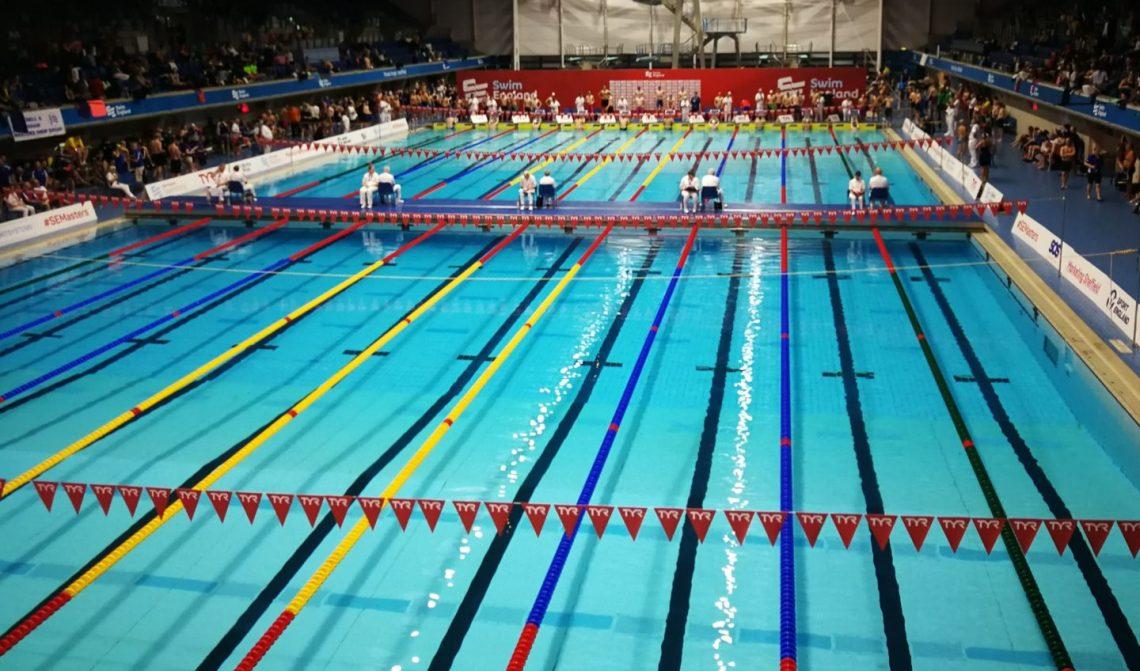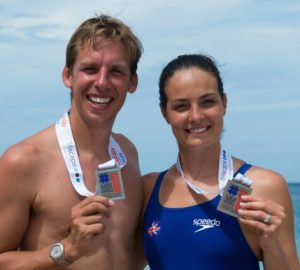
Why is an 800m race in the pool harder than the same distance in open water?
Image: The pools at Ponds Forge during the National Masters Swimming Championships
My favourite distances to race in open water are 3 to 5km. A mile seems too short. Hardly worth the effort. Yet, when it comes to pool racing, half that distance, 800m, seems like an awful long way.
I’m not the only one who thinks so. My controlled scientific study, which involved asking two other open water swimmers I met last weekend at the Swim England National Masters Championships in Sheffield, confirmed that this perception is widespread. The question is, why?
Freestyle races at masters events cover the following distances: 50m, 100m, 200m, 400m, 800m and 1500m. The latter, 60 lengths of the 25m pool, has far too many turns for my liking, so I rarely do it. But at this year’s nationals, I did all the others.
The 50m is a flat out two-length dash. To do it well, you have to nail your start, turn and finish. The 100m is similar, but requires pace judgement over the first 50m and enough endurance to keep it all together for the second 50m. The 200m is my favourite. Good pacing is vital. Keep focused to maintain pace on the third 50m and then sprint for the finish. It hurts, but it’s over quickly. When you double the distance again, to 400m, you start pushing my limits of what seems like a feasible distance to swim in a pool. Sixteen lengths is a huge challenge to my counting ability for one thing. Get the pacing wrong for the first 50m and you will have plenty of time to suffer and regret your error.
But it’s the 800m that truly tests my willpower and sense of humour and makes me want to get back outside.
You might think 800m should be easier to swim in the pool than in open water. There are 31 turns where you can glide and briefly rest your arms. You have a lane to yourself, with nobody tapping your feet, clashing arms with you or swimming over you. The water is warm and clear. But my extensive survey proves it’s harder. Here are some theories why, which may need further scientific investigation:
- In open water, you typically see the full distance laid out in front of you. When you see how far 800m looks in the water, you realise it’s a long way. Your brain reacts accordingly and prepares your body to deal with it. In the pool, even though you know it’s 32 lengths, 25m looks short and you can’t visualise what the total distance would be like, so when you’re swimming it seems much further.
- In the pool, it’s a time trial rather than a race. Open water allows you to draft, the pace varies, and you tend to hold something back for a sprint finish. The best approach for a pool 800m is to swim at an even pace throughout or complete the second half slightly faster than the first. This means there is never any let-up. You find your maximum sustainable pace and hold on as it becomes increasingly more uncomfortable.
- The scrutiny in the pool is intense, or at least it feels that way. You are on your own in the lane. There are judges, timekeepers and other officials watching you. Your splits are recorded every 50m as a permanent record of how well you managed your pacing.
- The turns in the pool may look like an opportunity to glide and rest, but it’s equivalent of adding 31 squats into your swim. That push off the wall makes you work the big muscles in your legs, which uses oxygen, plus you have several seconds before, during and after the turn where you don’t breathe – this all adds to the perceived and real effort. The turns also break your rhythm.
- Pool training – particularly in a masters club session – doesn’t prepare you for an 800m continuous swim. In training, you typically do repeats of 50, 100 or 200m. I can’t remember the last time a coach asked me to do an 800m swim in training. There would probably be a rebellion if they did. In contrast, open water training swims tend to be continuous over longer distances.
So now you know. And if you have any other theories (or disagree), please let us know.






